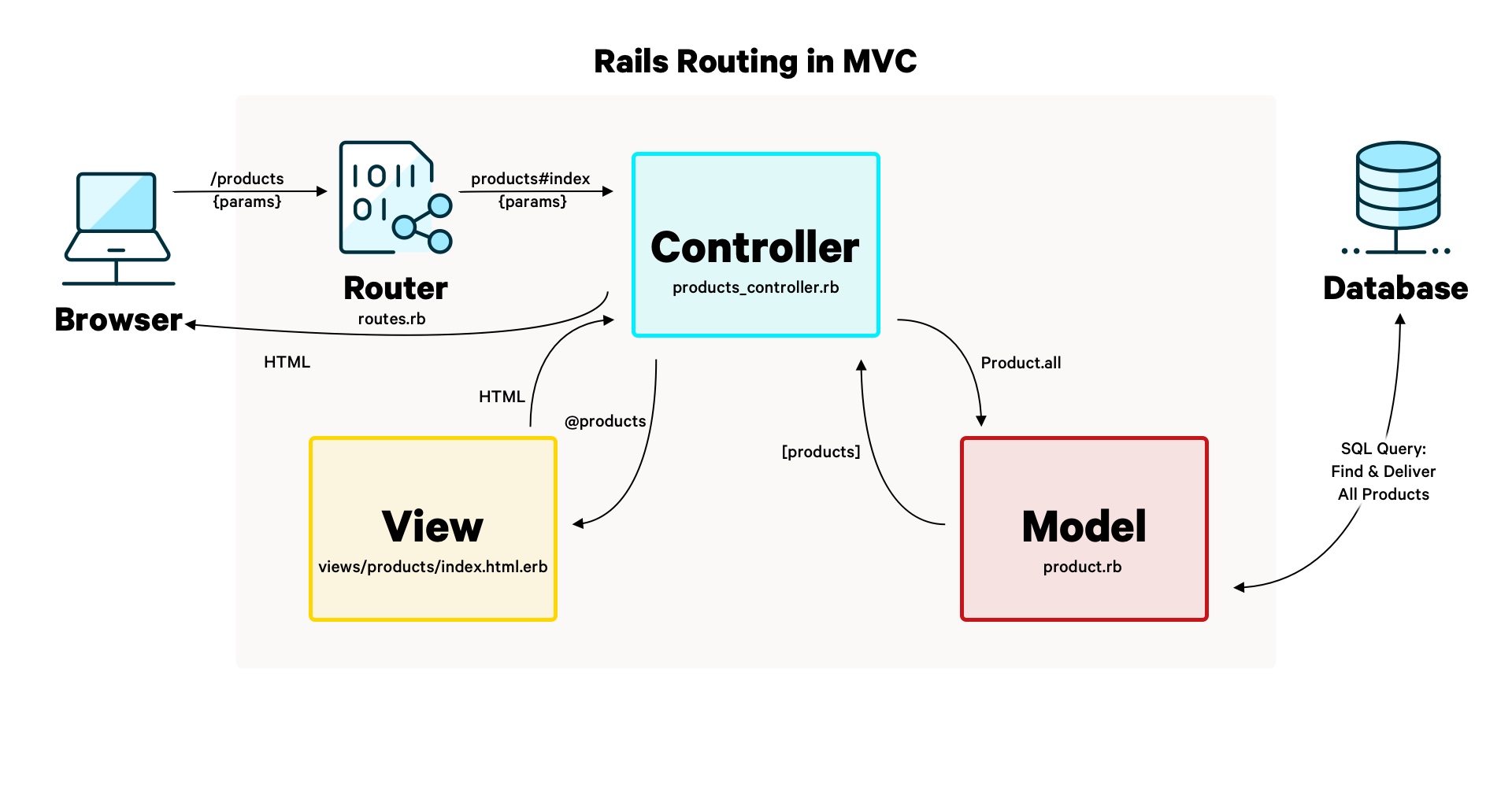Rails Routes Explained
When Rails sees a request that matches, it will send the request to the
ProductsController and the index action inside of that controller. This is
how Rails will process the request and return a response to the browser.
You’ll notice that we don’t need to specify the protocol, domain, or query params in our routes. That’s basically because the protocol and domain make sure the request reaches your server. From there, Rails picks up the request and knows which path to use for responding to the request based on what routes are defined. The query params are like options that Rails can use to apply to the request, so they are typically used in the controller for filtering the data.

Let’s look at more examples.
Proudly built by Evil Martians based on the Rails Guides.
Files
Preparing Environment
- Preparing Ruby runtime
- Prepare development database